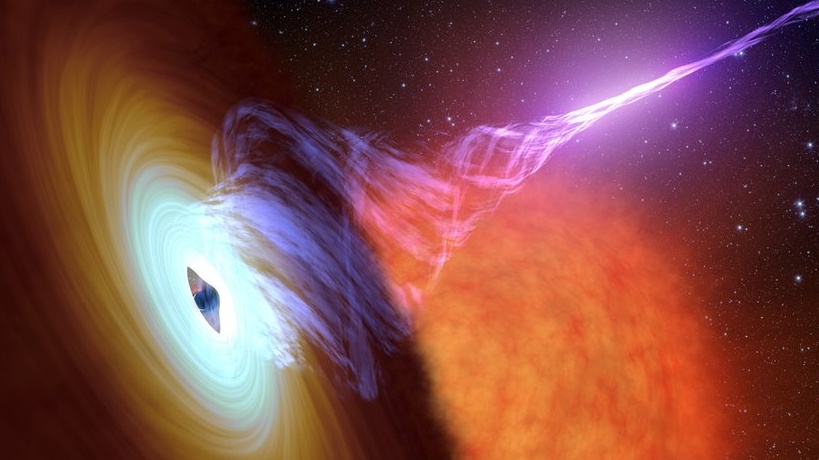
It would appear that a distant star has sprung back to life after its explosive death, blasting out repeated energetic flares over a period of several months that are like nothing astronomers have seen before.
Though each flash lasts just a few minutes even 100 days after the first eruption, they all remain as bright and as powerful as that original explosion — a rare type of stellar cataclysm called a "luminous fast blue optical transient" or LFBOT. This particular LFBOT is around a billion light-years from Earth and has been officially designated AT2022tsd, with its discoverers nicknaming it "the Tasmanian devil."
Far brighter than the usual explosions that mark the deaths of massive stars, LFBOTs also fading more rapidly postmortem, over the course of days rather than weeks. These extreme phenomena were first discovered in 2018, and in the half-decade since then, their origins have been shrouded in mystery. However, the Tasmanian devil's previously unseen flare activity might offer some answers., Spotted by 15 different telescopes across the globe, this behavior seems to indicate the engine driving LFBOTS is either a black hole or a neutron star — remnants left behind when truly huge stars die.
"We don’t think anything else can make these kinds of flares," Anna Y. Q. Ho, lead author of the research and an assistant professor of astronomy at Cornell University, said in a statement. "This settles years of debate about what powers this type of explosion and reveals an unusually direct method of studying the activity of stellar corpses."
Related: Hubble Space Telescope sees supernova wreckage in a hazy galaxy (image)
A new type of cosmic cataclysm
The Tasmanian Devil was first identified with software developed by Ho in Sept. 2022, as the system was sifting through data containing around half a million changing objects. or transients, detected via the Zwicky Transient Facility.
Following this, while routinely monitoring the LFBOT as it faded in Dec. 2022, Ho and her colleagues found a further bright spike of light coming from the event. The spike then promptly vanished.
"No one really knew what to say. We had never seen anything like that before — something so fast, and the brightness as strong as the original explosion months later — in any supernova or FBOT,” Ho said. "We’d never seen that, period, in astronomy."
To investigate this unexpected sort of "return to life" by the Tasmanian Devil, the team gathered observations from another 12 telescopes, including one that captured the event with a high-speed camera. After ruling out other possible light sources, the researchers were left with 14 irregular light pulses that happened over 120 days. This may just be a fraction of the total flares from the whole event, Ho believes.
"Amazingly, instead of fading steadily as one would expect, the source briefly brightened again — and again and again," she said. "LFBOTs are already a kind of weird, exotic event, so this was even weirder."
Ho and colleagues now intend to investigate the processes driving these blasts of light. The current prime suspects are jets of matter funneled by a black hole's magnetic field, which get blasted out at light-like speeds currently prime suspects. However, the possibility remains that LFBOTs could result from colliding and merging black holes.
"We might be seeing a completely different channel for cosmic cataclysms," Ho said.
The research could ultimately help reveal more about how stars die, as well as the types of stellar remnants they leave behind. In essence, LFBOTs may offer the chance to observe stars as they transition from "life" to "death."
"Because the corpse is not just sitting there; it’s active and doing things that we can detect," Ho said. "We think these flares could be coming from one of these newly formed corpses, which gives us a way to study their properties when they’ve just been formed."
The team’s research was published on Wednesday (Nov. 15) in the journal Nature.







